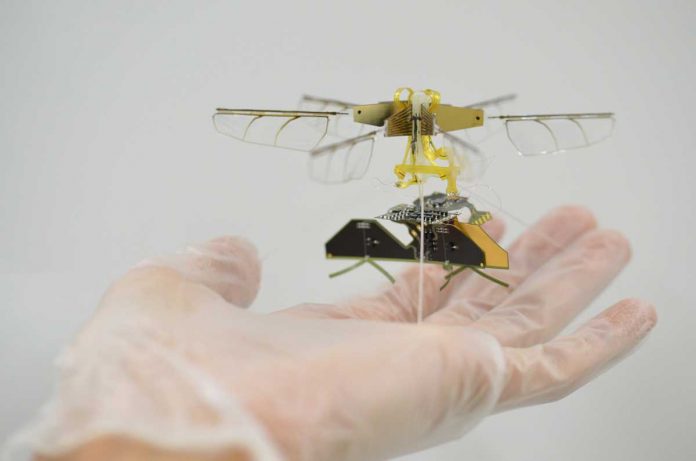Toyota Central R&D Lab researchers have developed an insect-scale aerial robot with flapping wings. The researchers have used wireless radiofrequency technology to create this robot. The research paper has been published in Nature Electronics. The robot has been developed by using radiofrequency power receiver and a power-to-weight density of 4,900 W kg-1.
Takashi Ozaki is one of the leading researchers of this innovation, has said that small drones used to have limited operating time because of their power sources. The main reason behind the innovation was to overcome the limitation of small drones. Recently, power supply using electromagnetic waves has been used in many products but before this research it was unknown to all of us how electromagnetic waves can be used in small flying robots.
The main purpose behind this study was to power an insect-size flying robot by using electromagnetic waves. The new robot created by the researchers consists of flapping and piezoelectric actuator.
Scientists have said that the efficient flapping actuation is one of the most important features of the robot. The flapping actuation has been made of high-power single-crystal piezoelectric material. In the flapping two wings face each other, like clapping hands. This design has power-to-weight efficiency like live insects.
A major challenge faced by the engineers who has tried to create this robot was thermal runaway caused by power losses. The engineers overcame this challenge by optimizing their robot’s circuit design. They made sure that heat generating components are not in touch with one another.
Scientists also used a radiofrequency power receiver. The power receiver had a power-to-weight density. This new feature has developed the robot’s efficiency and operating time.
Scientists said that the most important thing about this finding was to create a sub-gram circuit that is able to receive and handle high power of over 1 W.

